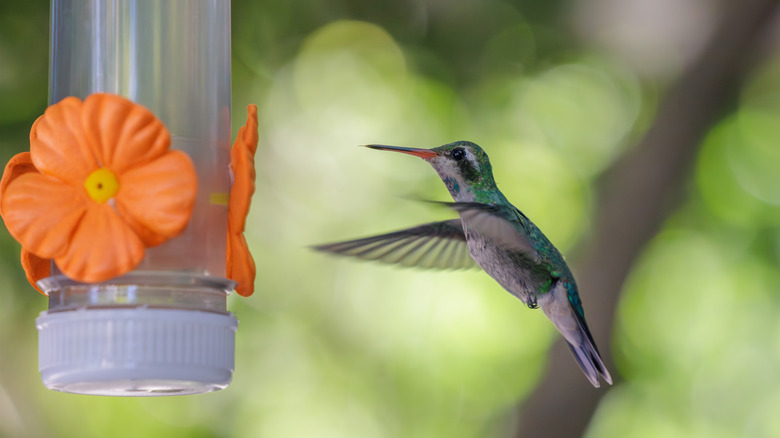Glass Vs Plastic Hummingbird Feeders: Is One Better Than The Other?
Hummingbirds are amazing animals that enhance homes and gardens with their aesthetic appeal and benefit the environment around the house. Among the important functions they do is acting as pollinators when they consume nectar from flowers. Additionally, hummingbirds help control the insect population in a yard by eating pests such as aphids and flies. While flowers are the primary food source for hummingbirds, installing a feeder is great because it gives them additional nourishment. Glass and plastic are the most common materials of hummingbird feeders available, and each has its pros and cons.
The advantages of a glass feeder start with its durability; this makes it resistant to deforming under the heat and UV radiation from the sun. It does not fade as easily and will not crack over time compared to plastic. Plus, glass is easier to clean because of its slippery surface. This means that stains, molds, and bacteria don't stick to the glass, and it does not absorb nectar as well. In terms of visual appeal, glass-type feeders have many designs and styles available to meet the aesthetic preferences of the user.
For plastic feeders, the immediate advantage is its weight. Usually made from either acrylic or polycarbonate, plastic feeders are lighter, making them easier to refill, handle, and install. In terms of durability, plastic-type feeders are also tough because they are impact resistant and will not shatter if dropped. By being shatter-proof, they are safer because they will not produce sharp shards if they fall. Lastly, because plastic feeders are cheaper, they can easily be replaced, or more of them can be installed around the yard.
Selecting the practical and most beneficial
Among the disadvantages of glass feeders is that they are more fragile and can easily chip, break, or crack if it is dropped or exposed to temperature fluctuations from the weather. Further, glass feeders can be more expensive, possibly limiting how many can be placed in a yard. Lastly, because of the material, glass feeders can be heavier compared to plastic, which can make them more difficult to handle, clean, and refill.
Plastic hummingbird feeders, on the other hand, suffer from issues associated with exposure to sunlight, which include discoloration, fading, warping, and even cracking over time. For its maintenance, plastic feeders can be more difficult to clean than glass, as built-up dirt, grime, and mold can stick to it easily, requiring frequent washing. Finally, some plastic feeders may contain BPA or microplastics and other hazardous materials that could be harmful to hummingbirds.
Aside from the type of material, other considerations for choosing what to use should include the following. It should be simple to use, since the feeder will be used regularly, and refilling it should be straightforward, without needing to remove many parts. Next, it must be easy to clean because any buildup of molds or insects inside the feeder should be removed immediately to avoid harming the birds. It should have an ample number of ports, because having more ports in a feeder will allow more birds to feed from it. Hummingbird feeders provide much-needed support for the birds, and selecting whether to use a glass or plastic hummingbird feeder should be based on what is most applicable for the homeowner and its value for the hummingbirds.

